Last Updated on May 24, 2023 by Ctybr67k
At the heart of Seville, three cultures overlap: the Moorish Alcazar Palace is just opposite the city’s enormous cathedral, where Christian heritage was built on Muslim foundations, some of which – parts of the mosque’s original entrance, and the minaret which is now the Giralda, or Bell Tower – are still there. And a short walk away is Santa Cruz, formerly the city’s Jewish area. This post takes you to Seville’s cathedral, the Giralda and Santa Cruz: a little history and tips on what to look out for.
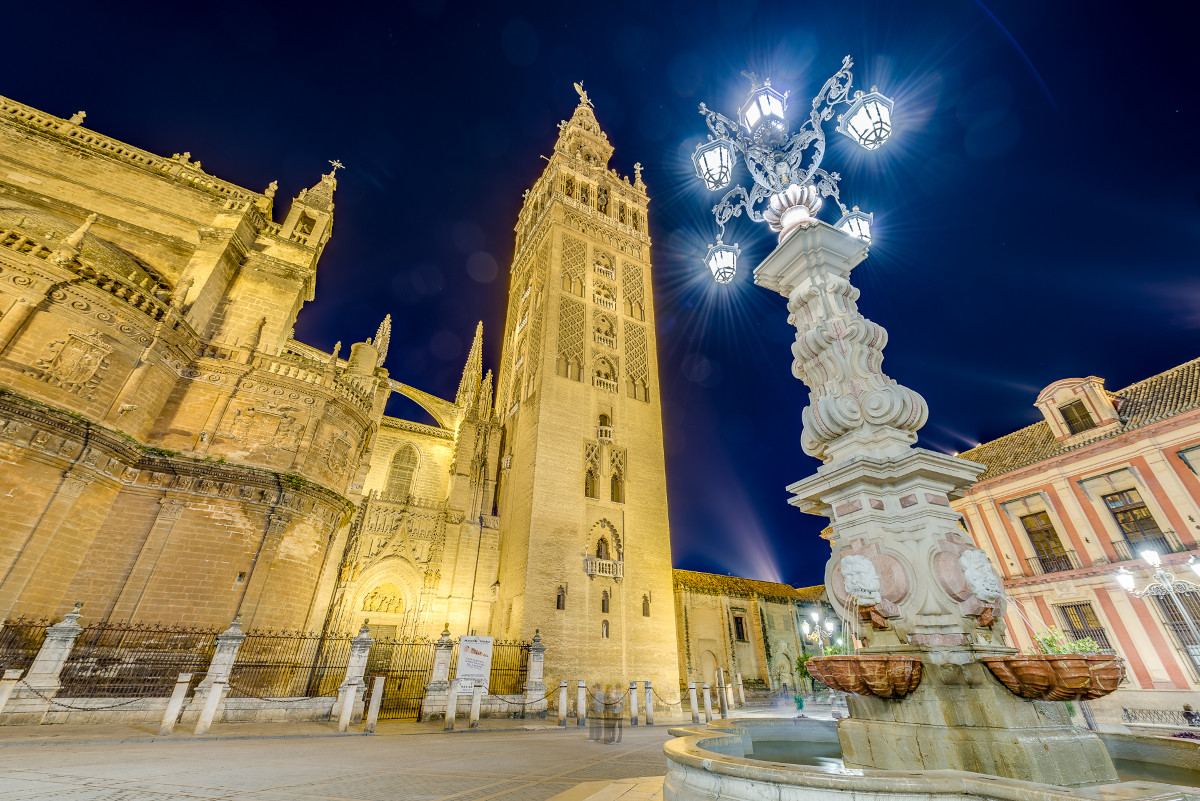
building the cathedral
It’s enormous! And deliberately so. Seville’s early Christians, planning their new cathedral after taking Seville back from the Moors, vowed ‘‘Let’s construct a church so large that future generations will think we were mad’. As a result, this is the largest church in the world if measured by volume, such that Théophile Gautier, visiting in the 19th century, wrote ‘It is a hollow mountain. Notre Dame de Paris could walk without bending her head down the central nave’. Together with the Alcazar it forms a Unesco World Heritage Site which is the city’s most visited attraction.
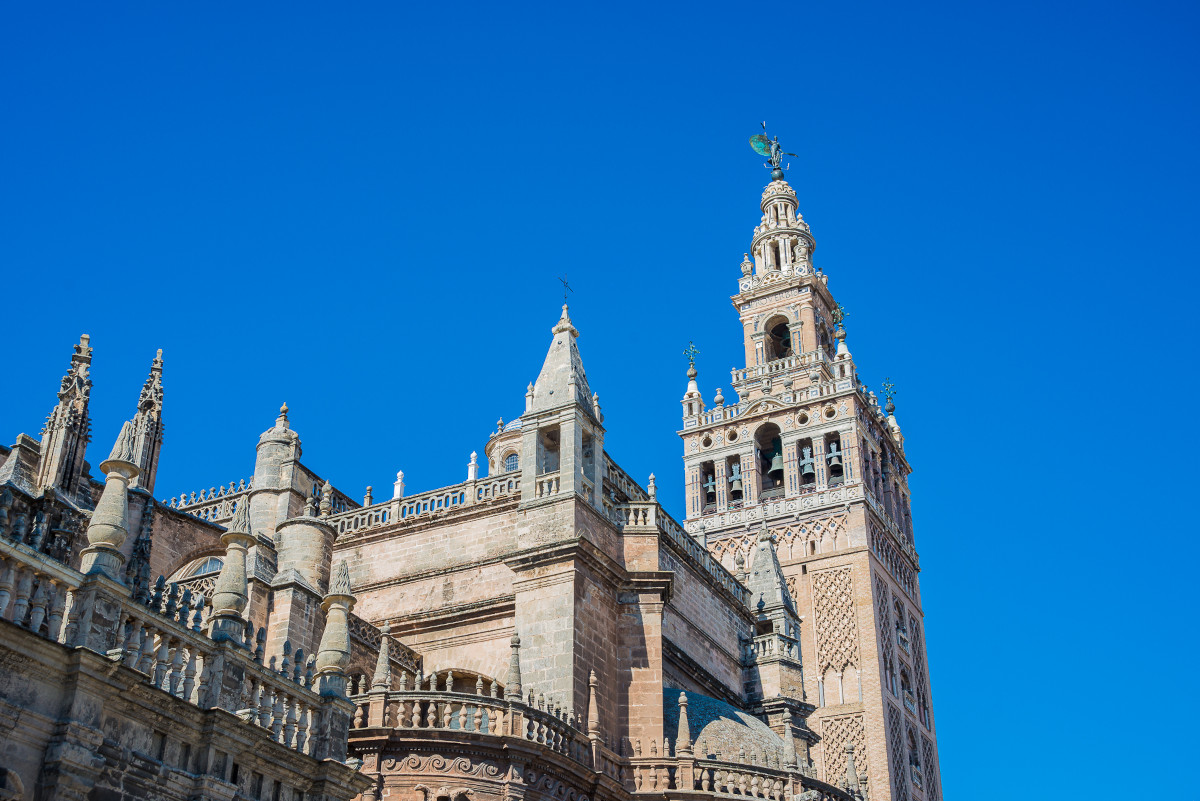
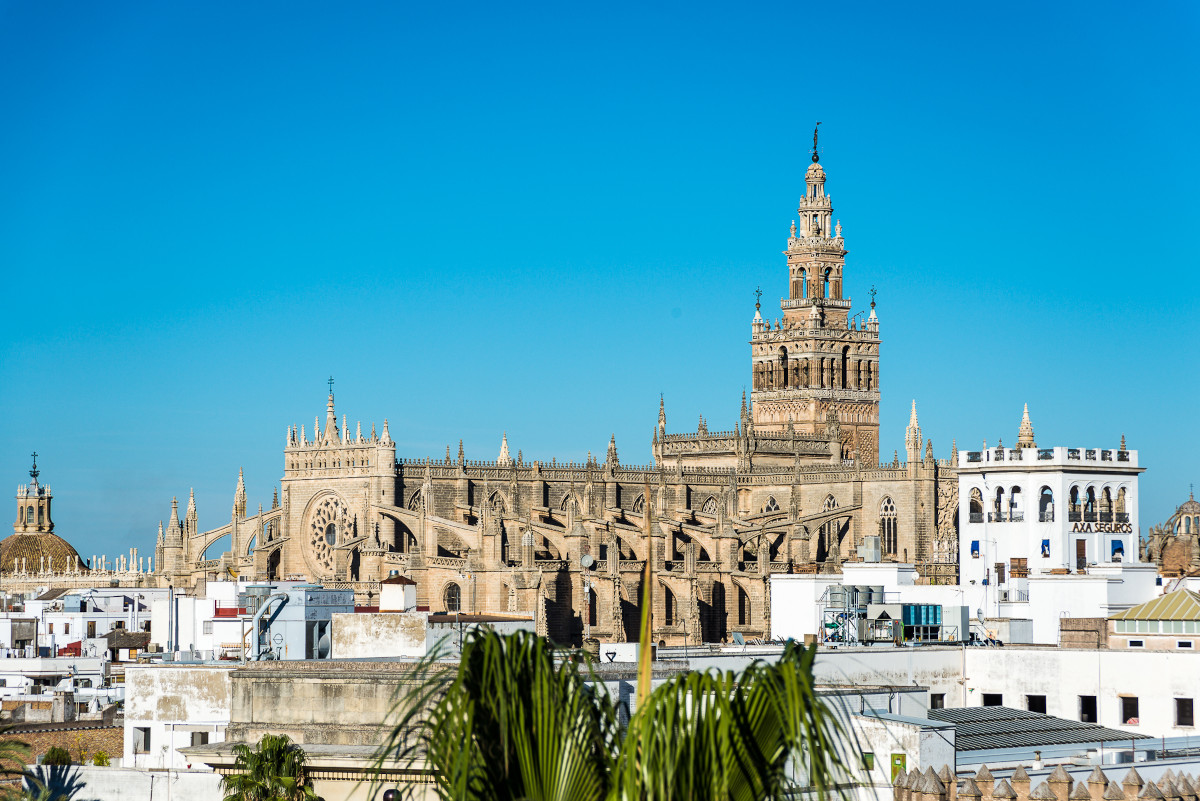

In 1356 an earthquake badly damaged the mosque which stood on this site, although the minaret survived. This was the spur to begin the new cathedral and building work started in earnest in 1401. The foundations were built on the original rectangular base of the old mosque and some remains were retained, notably part of the original gateway, which was renamed the Puerta del Perdon, or Gate of Forgiveness. The original inscription in Arabic is still there and reads ‘The empire is Allah’s’
Between the Puerta del Perdon and the cathedral is the Patio de los Naranjos, a delightful courtyard filled with orange trees where Muslim worshippers would pause to wash in the fountains and cleanse themselves before entering the holy building. The fountain there today is not the original, but you can still see the irrigation channels criss-crossing the courtyard to drain water away. The fruit of the orange trees was so bitter that it was not eaten, although a vast consignment was sold to English sailors, eager to avoid scurvy on their passage home. Because they didn’t eat all the oranges either, enterprising chefs used them up and founded the great British marmalade tradition at the same time.
inside the cathedral

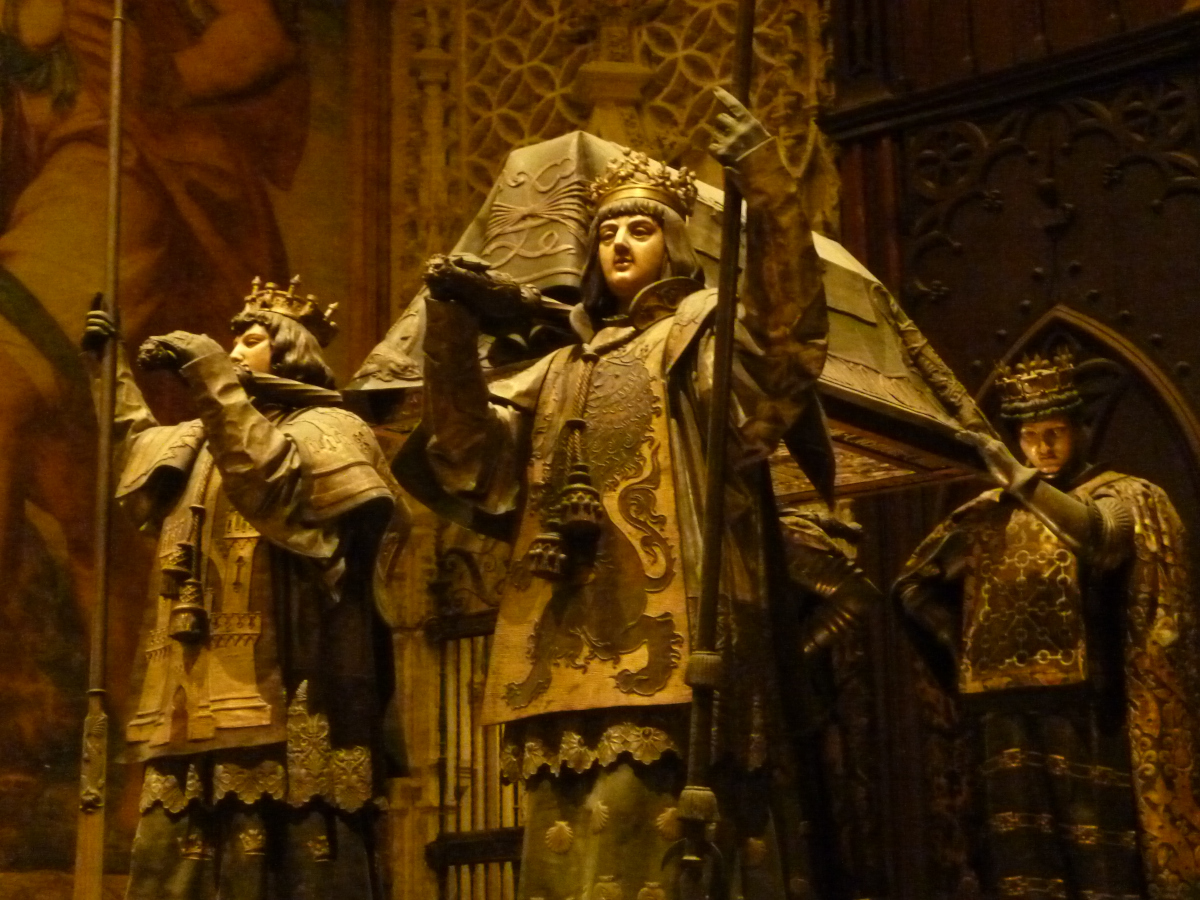
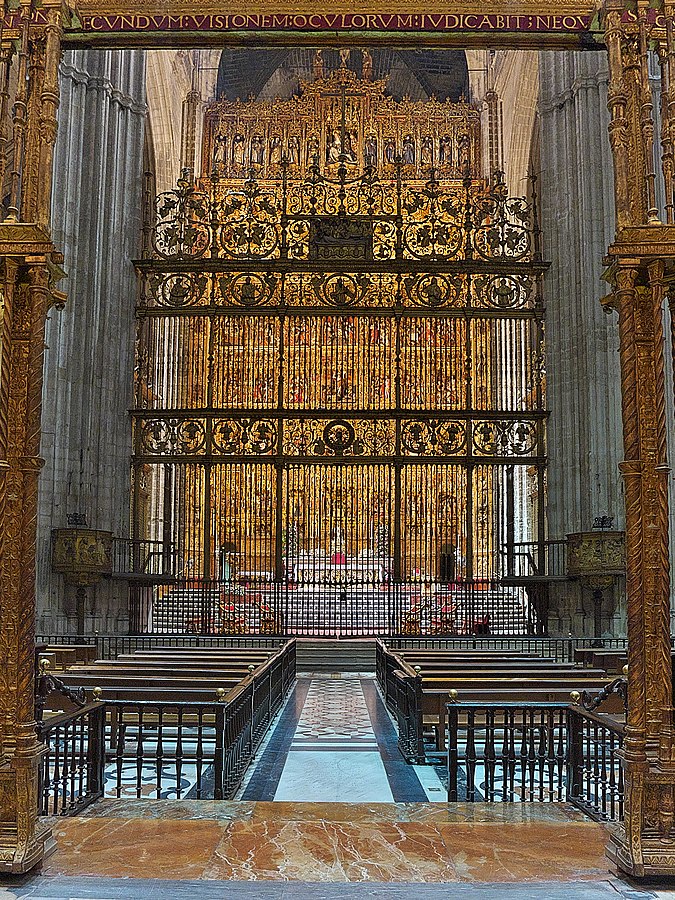
Did we mention it’s huge? Where to start? Perhaps with the Capilla Mayor, literally ‘big chapel’, in fact a closed off space around the altar, dripping with gold, decorated with more than a thousand coloured wooden statues of biblical figures and at the centre of it all, the ‘Virgen de la Sede’, a silver-plated image of the Virgin Mary. Take your binoculars or a good zoom lens if you want to look up close at the accumulated splendour of all these decorations, many of which represent the life’s work of one artist, the Flemish sculptor Pieter Dancart.
Of the cathedral’s 80 or so other chapels, perhaps seek out the Capilla Real (Royal Chapel) where a silver urn contains the remains of Ferdinand III, the Christian king who reconquered Seville. And maybe the Chapel of St Hermengild, recommended by the cathedral’s own guide book as containing its ‘finest tomb’, a beautiful 15rh century alabaster carving of Cardinal Juan de Cervantes, seemingly asleep on a bed of pillows. And, sought out by most visitors, is the tomb of Cristobal Colon, or Christopher Columbus, a massive bronze affair, held aloft by four figures representing the four kingdoms of Spain. Is he really buried inside? DNA tests suggested that some, but not all, of the bones inside are his. Or if not, said the scientists, they are his brother’s.
artwork
Again, what to highlight? Definitely Goya’s portrait of two female saints, Santa Justa y Rufina, the patron saints of the city, shown with the cathedral in the background, a reminder that appeals to them were said to have saved the cathedral during an 18th century earthquake. In the Saint Anthony Chapel is Murillo’s San Antonio, stolen in 1874 and found in New York, decades later, minus the part showing St Antony who had to be painted back in by restorers. And don’t miss the key presented to Fernando III by Moors surrendering the city to him in 1248. On it is engraved, in Arabic, the defiant inscription ‘May Allah render eternal the dominion of Islam in this city.’
the giralda
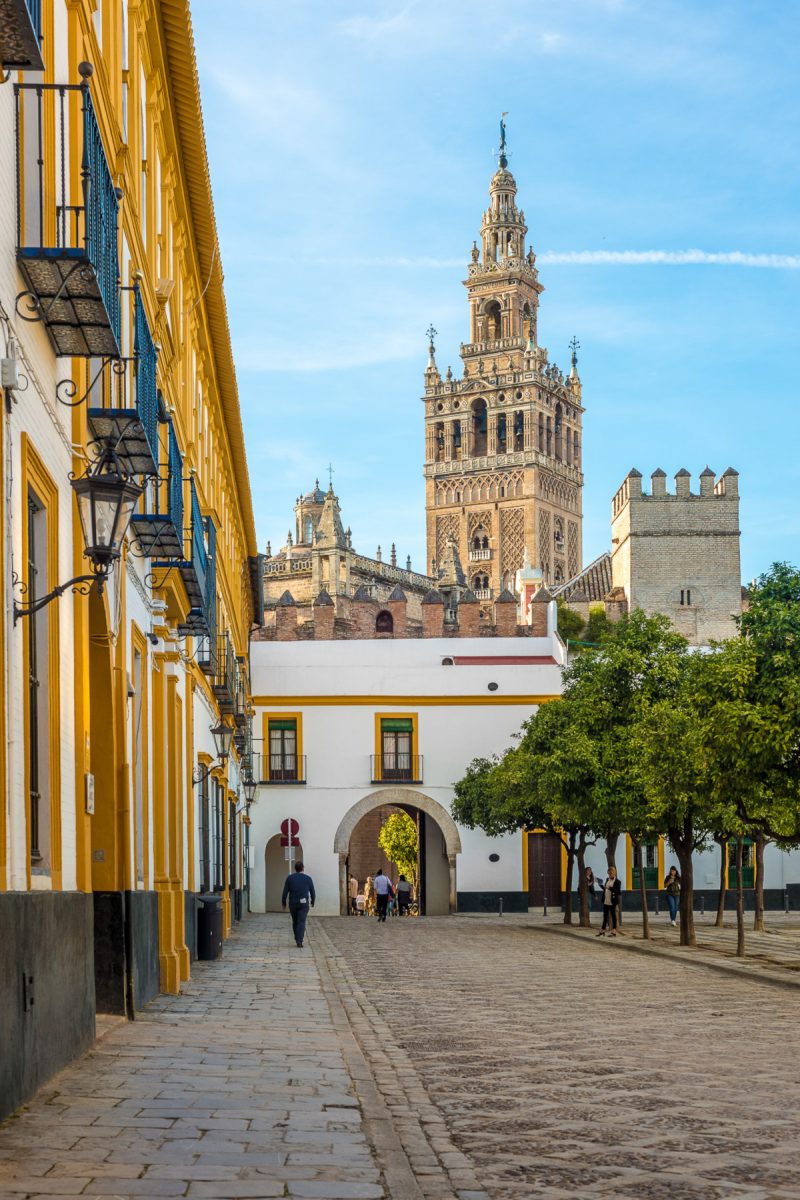

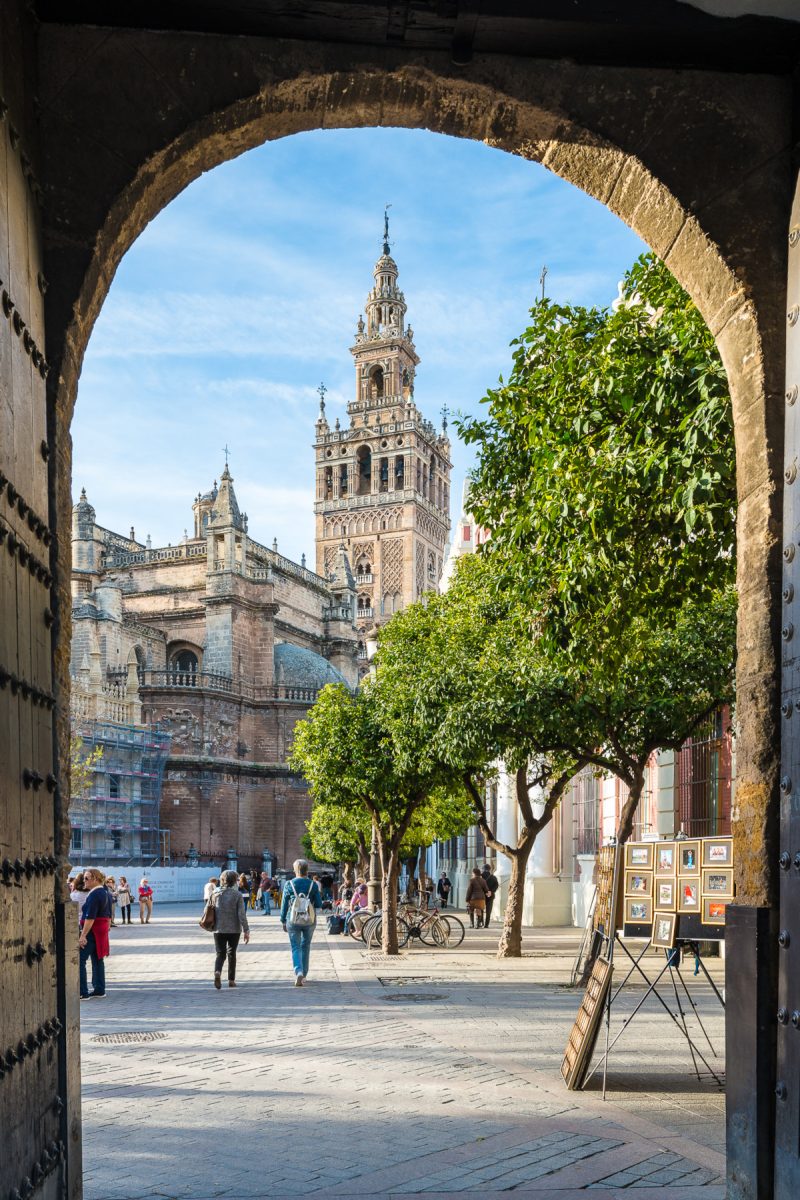
The Giralda is the beautiful tower which was originally the mosque’s minaret, then repurposed as the bell tower when the cathedral was built. This supreme feat of engineering, was built in the 1180s, 104 metres high, its square tower richly decorated with the geometric patterns so typical of islamic art. Climb up following the gentle ramps originally designed so that horsemen could ride up to the top. The bell tower, the top 2 sections, was added in the 16th century, with the weather-vane – ‘giraldillo’ in Spanish – on top from which it gets its name. The views from the top are spectacular and to see the pink-hued tower glowing at sunset is one of those Seville moments which can’t be bettered.
santa cruz

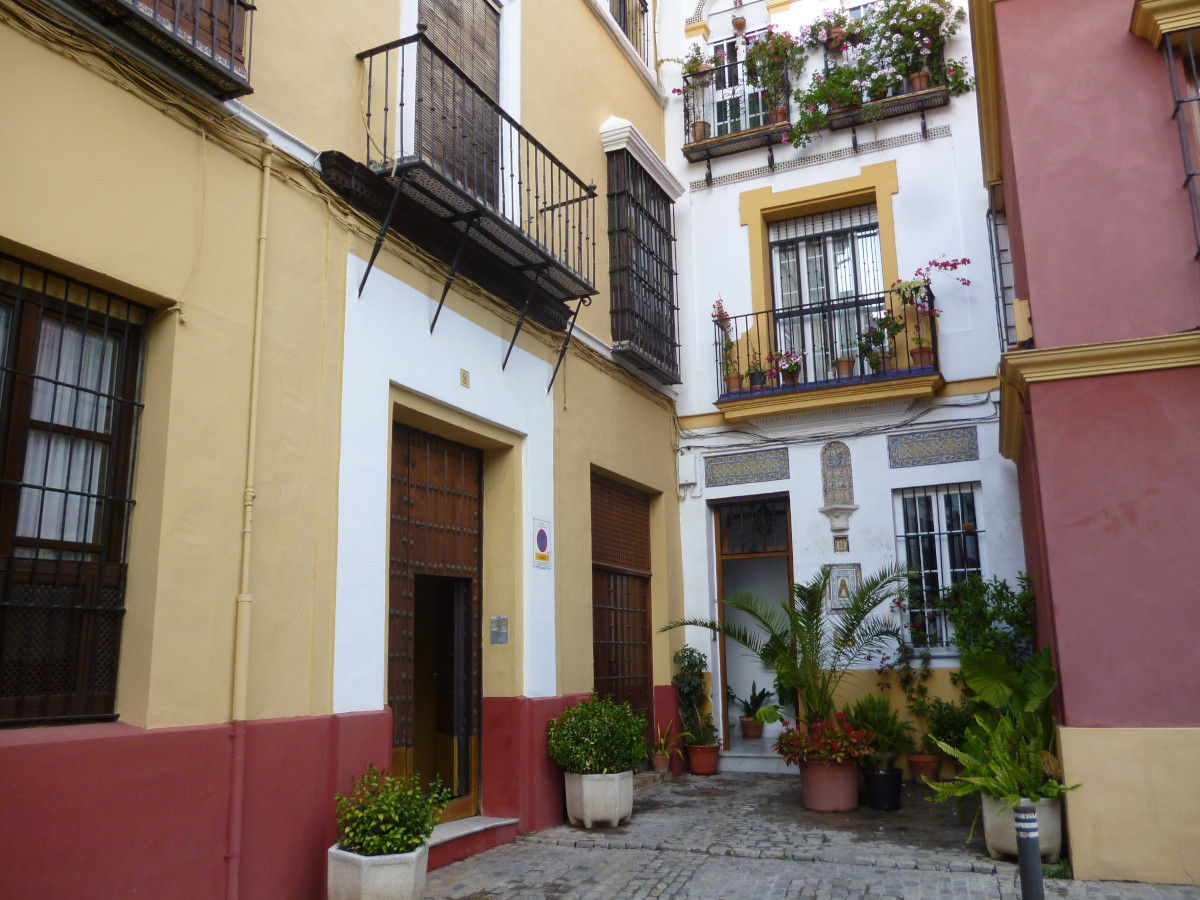

Santa Cruz, one of Seville’s most visited areas is a labyrinth of tiny cobbled streets, originally home to one of the biggest Jewish settlements in all of Spain until its inhabitants were persecuted in the Spanish Inquisition in the 15th century. Many were tortured and killed, and some 400,000 fled Spain altogether. Some had refused to ‘confess’ the Christian faith, others had done so but were not believed and for that they were sentenced to death by being burned alive. In Seville alone, some 10,000 Jews were murdered in this way, some of them on the steps of the cathedral itself. Nearly 100,000 more were imprisoned.
Today, the area is popular with tourists. Just a few minutes’ walk from the Alcazar and the Cathedral, you can wander its tiny cobbled streets, where restaurants and little shops abound. Here, perhaps, is the Seville you imagined. You will wander past many picturesque houses, set back behind patios full of flowers sprinkled by fountains, enticing yet unreachable, because you are separated from them by black metal grilles. Many an Instagram photo must surely be taken here.
Listen to the POdcast
Links for this post
Seville Cathedral and the Giralda
Santa Cruz
Previous episode The Alcazar
Next episode Seville’s Golden Age





